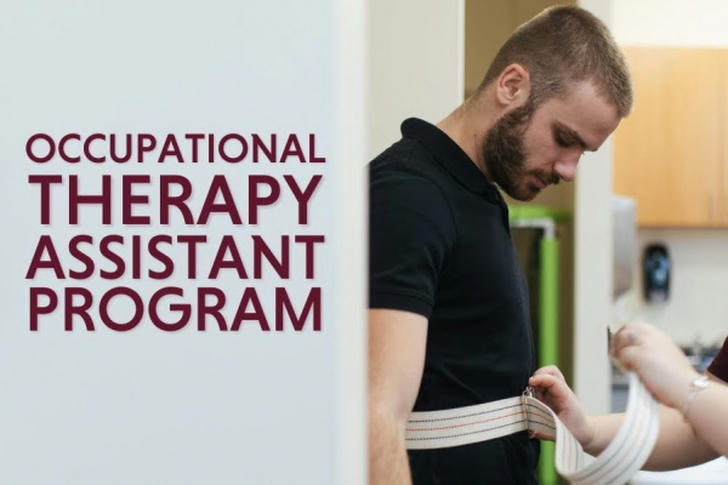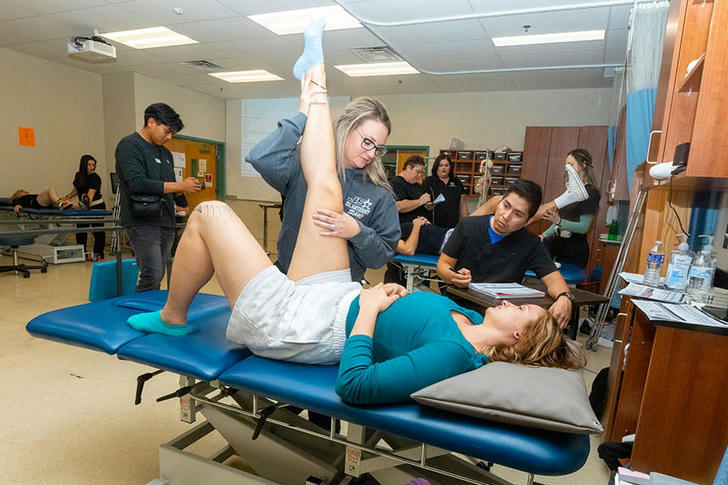How to Choose an Online Occupational Therapy Assistant Program: 2025’s Best Occupational Therapy Assistant Programs Compared
If you’re looking into Occupational Therapy Assistant (OTA) program, you’re starting down a meaningful and lucrative career pat. The U.S. Bureau of Labor Statistics (BLS) projects a 23% increase in OTA job opportunities over the next decade, meaning that an OTA career will be stable and offer a great salary right out of school.
Before you start your journey, it’s important to choose a program that will be a good fit for you and set you up for long-term success. Here’s how to choose the best online OTA programs for you.

Why Pursue an Online OTA Program?
Occupational Therapy Assistants work under licensed Occupational Therapists to help patients regain independence through therapeutic activities. The role requires a blend of theoretical knowledge and hands-on clinical skills. Online programs cater to students who need flexibility due to work, family commitments, or geographic limitations. However, not all programs are created equal. Here’s how to identify the best fit for your career goals.
Key Factors to Evaluate
1. Accreditation: Non-Negotiable
Why It Matters: Only programs accredited by the Accreditation Council for Occupational Therapy Education (ACOTE) qualify graduates to sit for the National Board for Certification in Occupational Therapy (NBCOT) exam—a requirement for state licensure.
Red Flags: Avoid unaccredited programs, even if they claim to offer “preparation” for certification.
2. Curriculum Structure
•Core Courses: Look for programs covering anatomy, physiology, pediatric and geriatric interventions, mental health strategies, and assistive technologies.
•Clinical Rotations: Even online programs require in-person clinical hours (typically 16+ weeks). Ensure the program partners with local healthcare facilities to arrange placements.
•Capstone Projects: Programs that integrate real-world case studies or research projects better prepare students for workplace challenges.
3. Flexibility vs. Rigor
•Synchronous vs. Asynchronous Learning: Asynchronous courses allow self-paced learning, while synchronous sessions offer live interaction. Determine which suits your schedule.
•Part-Time Options: Ideal for working professionals, but confirm the program’s maximum completion timeline (e.g., 3–4 years).
4. NBCOT Pass Rates
Programs should publish their NBCOT exam pass rates. A rate above 85% indicates strong preparation. For example:
•St. Catherine University (MN): 94% pass rate (2024 data).
•Pennsylvania College of Health Sciences: 89% pass rate.
5. Cost and Financial Aid
•Tuition Range: Online OTA programs average 15,000–25,000 total. Compare in-state vs. out-of-state fees.
•Hidden Costs: Clinical travel, technology fees, or textbooks can add $2,000+ annually.
•Scholarships: Some schools offer OTA-specific aid, like AOTA Foundation awards.
6. Student Support Services
•Career Placement: Programs with job placement rates above 90% (e.g., Keiser University) signal strong industry connections.
•Mentorship: Access to faculty with clinical experience enhances learning.
•Technical Support: Reliable IT assistance is critical for online labs or simulation software.
2025’s Top Online OTA Programs Compared
1. St. Augustine College of Health Sciences (Flex OTA)
Format: Hybrid (online coursework + local clinicals).
Duration: 24 months.
Highlights:
•ACOTE-accredited.
•NBCOT pass rate: 92% (2024).
•Partnerships with 1,000+ clinics nationwide.
Cost: $18,500 total.
2. Purdue Global
Format: Fully online except for clinical rotations.
Duration: 20 months (accelerated).
Highlights:
•Low faculty-to-student ratio (1:15).
•Includes virtual reality (VR) simulations for skill practice.
Cost: $21,000 (military discounts available).
3. Community College of Baltimore County (CCBC)
Format: Online + evening labs.
Duration: 2 years.
Highlights:
•Most affordable ($12,800 in-state).
•Strong focus on geriatric care.
Drawback: Limited out-of-state clinical placements.
4. University of Cincinnati
Format: Part-time online, ideal for working students.
Duration: 28 months.
Highlights:
•Renowned for mental health and pediatric modules.
•NBCOT prep workshops.
Cost: $16,200.

Red Flags to Avoid
1.Guaranteed Licensure Claims: No program can “guarantee” licensure—it depends on exam performance and state requirements.
2.Lack of Clinical Support: Avoid programs that require you to self-arrange clinical rotations.
3.Unclear Pass Rates: If a school hesitates to share NBCOT data, proceed with caution.
Future-Proofing Your Career
The OTA field is evolving with telehealth and AI-driven tools. Choose programs that incorporate:
•Telehealth Training: Learn to conduct remote patient assessments.
•Technology Integration: Exposure to adaptive devices or electronic health records (EHR) systems.
Conclusion
Selecting an online OTA program in 2025 demands balancing affordability, flexibility, and educational quality. Prioritize ACOTE-accredited programs with robust clinical partnerships and high NBCOT pass rates. Whether you choose St. Augustine’s hybrid model or CCBC’s budget-friendly option, ensure the curriculum aligns with emerging healthcare trends. By investing in the right program, you’ll join a growing workforce dedicated to transforming lives through occupational therapy—one step at a time.
Next Steps: Visit AOTA’s program directory to verify accreditation, and schedule consultations with admissions advisors to clarify clinical logistics and financial aid options. Your path to becoming an OTA starts with informed choices!
